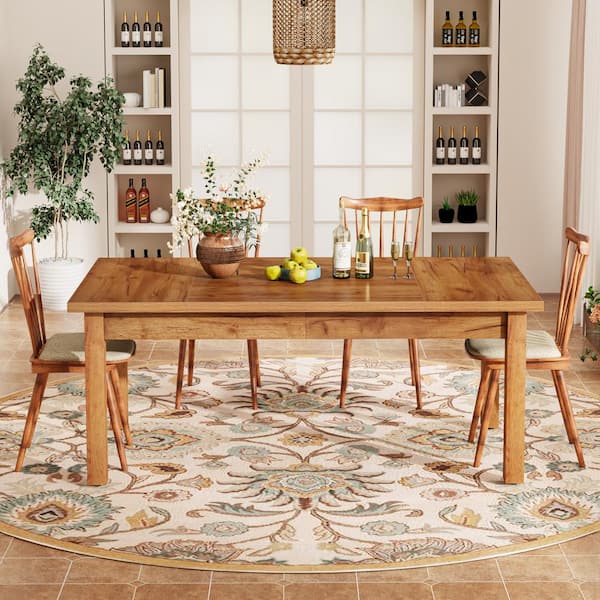Upgrade Your Furniture with Trendy Dining Room Table Legs
Upgrade Your Furniture with Trendy Dining Room Table Legs
Blog Article
A Detailed Take A Look At Table Leg Styles: Discovering the Ideal Suit
Picking the appropriate dining table leg design is essential for both aesthetic appeal and practical capability. Typical four legs offer classic sophistication and stability, while the stand base supplies enhanced legroom and a modern appearance. For those with larger tables, trestle legs ensure strong support, whereas barrette legs introduce a mid-century modern ambiance with their minimal style. The x-shaped legs blend modern style with boosted stability. Each of these alternatives brings special benefits, making the option greater than simply a matter of choice. Explore better to discover which design perfectly enhances your dining room and lifestyle.
Typical Four Legs
Among the various types of dining table leg designs, the standard four-leg style remains an ageless option for lots of homes. 4 legs provide well balanced assistance, guaranteeing the table remains secure and qualified of bearing considerable weight (dining room table legs).
From an aesthetic point of view, the typical four-leg layout can be conveniently adjusted to various indoor designs. Whether crafted from wood, metal, or a combination of products, these legs can be delicately sculpted, smooth and minimalistic, or anything in between. Their versatility permits them to enhance both rustic and modern setups effortlessly.
Furthermore, the uncomplicated structure of the four-leg design helps with ease of motion and placement within an area. Unlike even more complex bases, this design decreases obstructions, offering enough legroom for diners. In summary, the typical four-leg table leg style marries sustaining style with practical functionality, making it a sharp option for those looking for both form and function in their dining furnishings.
Pedestal Base
Often celebrated for its stylish and space-efficient design, the stand base is a notable choice to the standard four-leg arrangement in dining table leg styles. This unique base generally includes a single central column supporting the table top, which can differ in type, from ornately sculpted wood to streamlined, contemporary steel. One of the main advantages of the stand base is its ability to optimize legroom and seating adaptability. Without corner legs, diners are managed better freedom of activity, making it an excellent choice for round and oblong tables that promote even more intimate and inclusive events.
The main column itself supplies a canvas for elaborate styles and imaginative expressions, including an element of visual rate of interest underneath the table. In summary, the pedestal base incorporates capability with style, making it an improved and functional choice for varied dining environments.
Trestle Legs
Trestle legs give a moved here robust and timeless structure for dining tables, identified by their horizontal cross-bracing and tough support beams. Stemming from middle ages times, this style has progressed yet retained its essential framework, making it a perennial favorite in both traditional and contemporary setups. The central trestle light beam, typically sustained by two or more upright blog posts, supplies exceptional stability, permitting for larger table sizes without the need for extra legs.
A substantial advantage of trestle leg tables is the enough legroom they provide. Unlike tables with 4 edge legs, the absence of obstructions at the table's sides provides unobstructed room for chairs and diners, improving convenience and availability. This makes trestle tables suitable for fitting bigger gatherings, whether in a dining area or a reception hall.
From rustic farmhouse to streamlined modern-day layouts, trestle legs can be customized to suit individual tastes. Their enduring appeal and functional benefits make trestle legs a compelling choice for those seeking both style and practicality in their dining table.
Barrette Legs

The allure of hairpin legs depends on their simpleness and flexibility - dining room table legs. Offered in a range of materials, consisting of steel and brass, they can be ended up in various shades to enhance different indoor designs. Whether paired with a rustic wood tabletop or a modern glass surface area, barrette legs easily mix performance with a touch of vintage appeal
Resilience is an additional remarkable function of hairpin legs. Despite their fragile look, these legs are crafted to birth significant weight, ensuring the table continues to be secure and secure. Furthermore, they are fairly simple to mount, making them a preferred selection for DIY lovers and specialist furnishings manufacturers alike.
X-Shaped Legs

Constructed from materials such as steel, timber, or a mix of both, X-shaped legs can be customized to match numerous style choices. Steel legs typically provide a sleek and industrial feeling, suitable for loft-style apartment or condos and modern-day eating rooms.
Additionally, the design behind X-shaped legs makes sure even weight distribution, reducing the threat of wobbling and enhancing longevity. This makes them specifically fit for larger eating tables that require additional useful reference assistance. Essentially, X-shaped legs mix useful design with modern-day aesthetic appeals, making them an ageless selection for varied eating environments.
Conclusion
A detailed understanding of dining table leg designs discloses the unique characteristics and advantages of each style. Trestle legs ensure durable support for larger tables, and barrette legs introduce a mid-century modern-day aesthetic.
Report this page